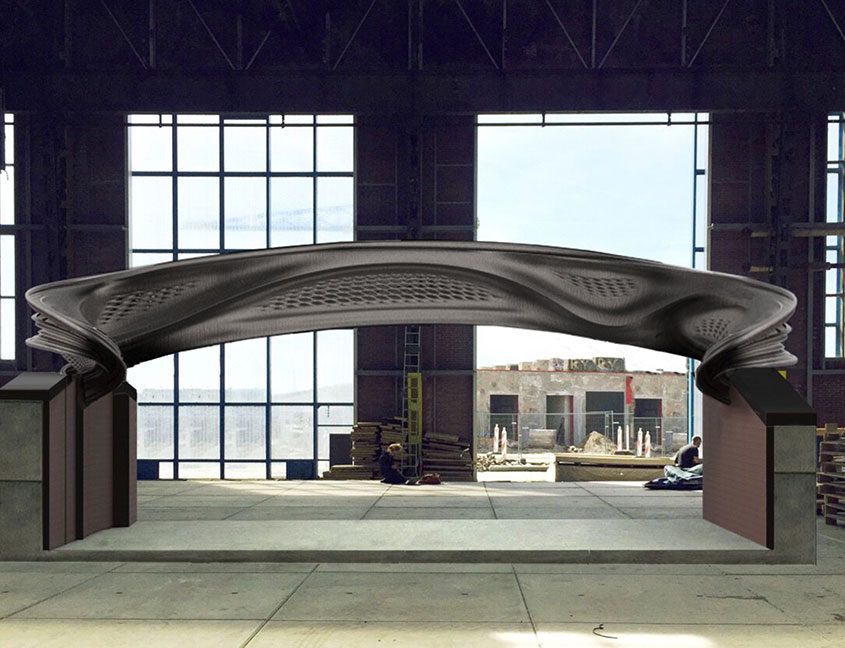MX3D, a Robotic Additive Manufacturing (RAM) technology developer based in Amsterdam andTakenaka, Japan’s oldest architectural, engineering and construction firm, have developed a 3D printed structural steel connector. Reimagining the internal construction of standard building structures, the connector is an example of how MX3D is exploring 3D printing in construction following it’s3D printed bridgeproject.
“We’re getting much interest from construction companies after our moonshot project on theMX3D Bridge,” stated Filippo Gilardi, R&D Lead at MX3D. “Together with Takenaka we’ve built this connector to show how the wire arc additive manufacturing (WAAM) technology is ready for industrialization to create unique connectors for complex constructions.”
“This collaboration truly shows that architectural creativity doesn’t have to be limited by manufacturing constraints by further closing the digital design loop.”
3D printing buildingcomponents
Founded in 2015, MX3D leverages metal 3D printing for new and high impact industries using intelligent RAM technology to produce unique computer-generated parts and structures. As its latest venture, MX3D focused on the application of 3D printed components for civil engineering.
The Structural Steel Connector is designed with a hollow composition filled with concrete, poured post-print by Takenaka engineers. According to MX3D, filling concrete or mortar into steel tubes is commonly conducted in civil engineering and is called a Concrete-Filled Steel Tube (CFST). It delays or prevents local buckling of steel, and the outer steel bears bending.
The connector weighs 40kg and reaches up to 45kg after it is filled with approximately 2.5 liters of mortar. The structure is 3D printed using duplex stainless steel, an alloy with good mechanical properties and excellent corrosion resistance. Takuya Kinoshita, Project Leader at Takenaka:
“This innovative manufacturing technology seamlessly connects bits and atoms, dramatically shortens lead times, pushes the boundaries of design, and finally contributes to the creation of more splendid architectural spaces.”

WAAM construction
In conjunction with the company’s MetalXL software, it’s WAAM 3D printer can produce large and complex metal objects. Previously, MX3D released an updated take on theArc Bike II, a 3D printed from aluminum. As a result of the aluminum material, the Arc Bike II is significantly lighter than its predecessor, theArc Bike I, which was made from stainless steel.
Last year, the company developed a 12 meter long3D printed steel bridgenow placed at the Oudezijds Achterburgwal canal in Amsterdam. MX3D has also confirmed a second, digital, bridge construction project with the剑桥中心智能基础设施和缺点truction(CSIC),Imperial College London, andThe Alan Turing Institute.

Looking for the latest construction 3D printing news? Subscribe to the3D Printing Industry newsletter, follow us onTwitterand like us onFacebook. Also, visit3D Printing Jobsto commence your career in additive manufacturing.
Featured image shows the 3D printed structural steel connector. Photo via MX3D.


